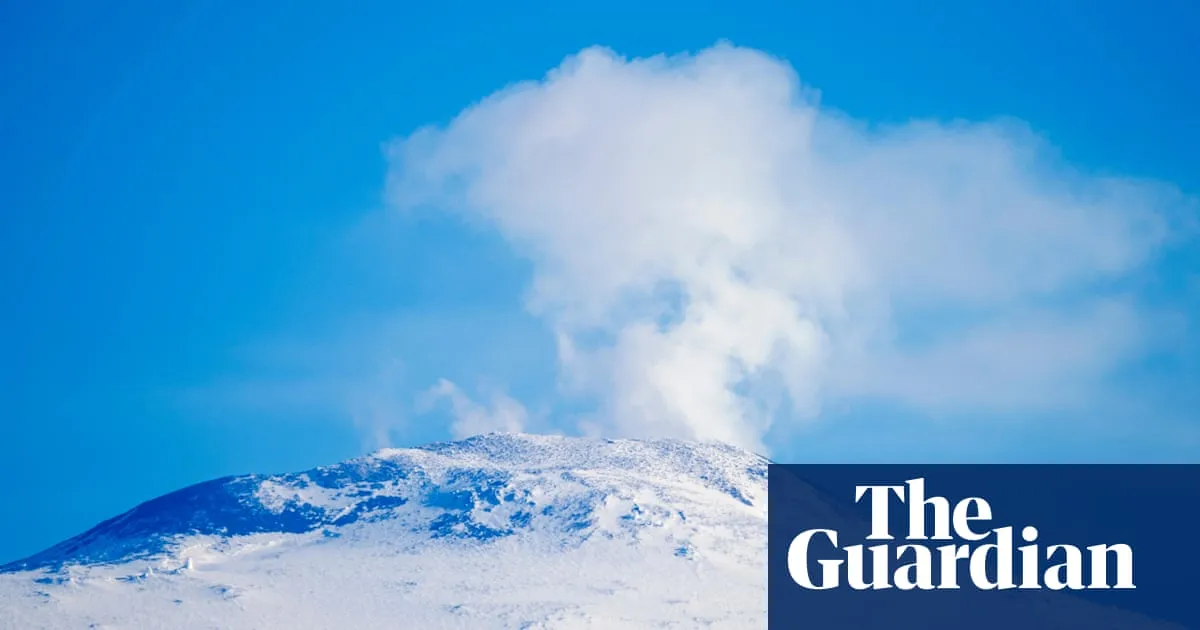
The ongoing climate crisis is not only causing significant changes to our planet's climate but may also trigger a concerning phenomenon: an increase in volcanic eruptions. A recent study suggests that the melting of glaciers and ice caps could lead to a surge in explosive volcanic activity. As glaciers recede, the pressure on underground magma chambers is alleviated, making eruptions more probable.
This process has been observed in Iceland, which is uniquely situated on a mid-ocean tectonic plate boundary. However, groundbreaking research conducted in Chile represents one of the first comprehensive studies to demonstrate a rise in volcanism on a continental scale following the last ice age. The study emphasizes the profound effects of global warming, primarily driven by the burning of fossil fuels, which is accelerating the melting of ice caps and glaciers worldwide.
The research highlights that the greatest threat of increased volcanic activity lies in West Antarctica. This region is home to at least 100 volcanoes buried beneath thick ice. As global temperatures continue to rise, it is highly likely that this ice will melt over the coming decades and centuries, potentially unleashing previously dormant volcanoes.
While volcanic eruptions can temporarily cool the planet by releasing sunlight-reflecting particles into the atmosphere, sustained eruptions pose a serious risk. Such eruptions would release significant quantities of greenhouse gases like carbon dioxide and methane into the atmosphere, further exacerbating global warming. This creates a dangerous feedback loop where increasing temperatures lead to more ice melt, which in turn causes more volcanic activity, resulting in further global heating.
Pablo Moreno-Yaeger, a researcher at the University of Wisconsin-Madison, led the study and stated, “As glaciers retreat due to climate change, our findings suggest these volcanoes go on to erupt more frequently and more explosively.” The findings were presented at the Goldschmidt geochemistry conference in Prague and are currently in the final stages of review for publication in an academic journal.
The research team conducted extensive fieldwork high in the Andes, focusing on both active and dormant volcanoes. They studied the Mocho-Choshuenco volcano, employing radioisotope dating to estimate the ages of volcanic rocks formed before, during, and after the last ice age when the Patagonian ice sheet was at its thickest, measuring approximately 1,500 meters.
Analysis of the volcanic rock revealed that the thick ice cover had previously suppressed eruption volumes between 26,000 and 18,000 years ago, allowing magma to accumulate 10-15 kilometers (6.2-9.3 miles) beneath the surface. After the ice began to melt around 13,000 years ago, the pressure on the magma chamber was released. This led to the expansion of gasses within the molten rock, resulting in explosive volcanic eruptions.
Moreno-Yaeger noted, “We found that following deglaciation, the volcano starts to erupt way more, and also changes composition.” The study indicates that the composition of magma changes as it interacts with crustal rocks, making it more viscous and explosive upon eruption. “Our study suggests this phenomenon isn’t limited to Iceland but could also occur in Antarctica,” he added, urging for closer scientific examination of other continental regions such as parts of North America, New Zealand, and Russia.
Previous studies have indicated that global volcanic activity increased by two to six times after the last ice age. However, the Chilean study is among the first to detail the mechanisms behind this increase. As climate change continues to reshape our planet, understanding the relationship between melting ice and volcanic activity is crucial for predicting future geological events and their implications for global climate dynamics.